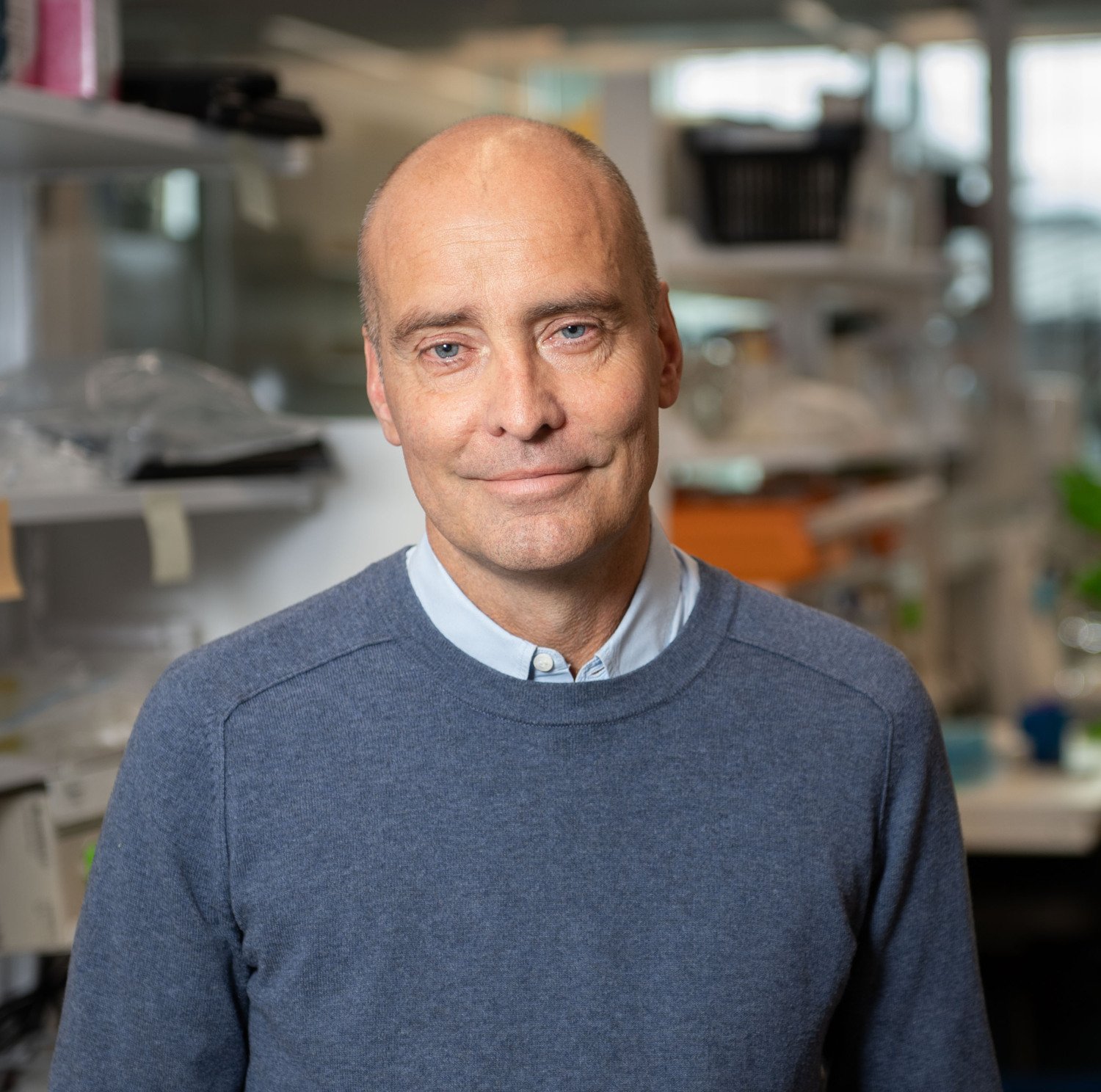Impact case: What goes on in a cell?
How can you see what goes on in a cell? Biologists have developed methods to decipher the inner workings of our cells for more than one hundred and fifty years. Spatial Transcriptomics takes the technology one step further by opening a new window into the cellular activity of living tissue.

"It is almost like going from listening to the radio to watching TV," says Jonas Frisén. "We all know that an image says more than a thousand words."
Jonas Frisén is the man behind the idea of Spatial Transcriptomics, a method that allows scientists to measure all the gene activity in a tissue sample and map with precision where that activity is occurring.
RNA pieces
Biological tissues consist of many different kinds of cells, and they all behave differently. In a tissue sample, cells will produce short RNA-molecules as their genes are activated. The sequences of the RNA-molecules reveal which specific gene they originate from.
These RNA pieces from the tissue sample can then be captured on an array, and this array can after some further analysis reveal where in the sample the different RNA-sequences were produced. The result is an image that shows all the cellular activity in the sample, and where the activity occurred, with a resolution of some ten cells.
This spatial map of the genetic activity is valuable information in a great number of situations.
"For instance, it is important when studying the brain," says Jonas Frisén. "There are several hundred different kinds of neural cells, behaving in different ways in a sample. We can use it on infections, dementia, stroke and many other conditions. And not least when studying cancer tumours."
Method of the year

Spatial Transcriptomics is so far mainly a research method, and it was designated as “Method of the Year” by the journal Nature Methods in 2020. But it has started to come into clinical use as well.
Jonas Frisén had the idea for the technique in 2009 and after involving biotechnology colleagues at KTH, the Royal Technical University in Stockholm, Joakim Lundeberg and Patrik Ståhl, the method was developed. Today it is commercialized as a product by the name of Visium by the American biotech company 10x Genomics.
"The key to commercial success has been to first find a problem that needs to be solved, and that was obvious here," says Jonas Frisén. "The method is easy to apply. The basic principle is really very simple. There is no need for big investments, it works with ordinary laboratory equipment, so the threshold for adopting it is low."
"But taking the step out in the business world can be more demanding than you first think," he says. "Many economic and legal issues must be dealt with, not least the patents, that’s where the value lies. So, it is crucial to have good help in the process."
Key takeaways
- Start with a clear problem. Identifying a real need was key to developing a method with clear value and application.
- Keep the method simple and accessible. The technique works with standard lab equipment, lowering the threshold for adoption.
- Get support for commercialization. Navigating legal and economic challenges, especially around patents, requires expert help.
